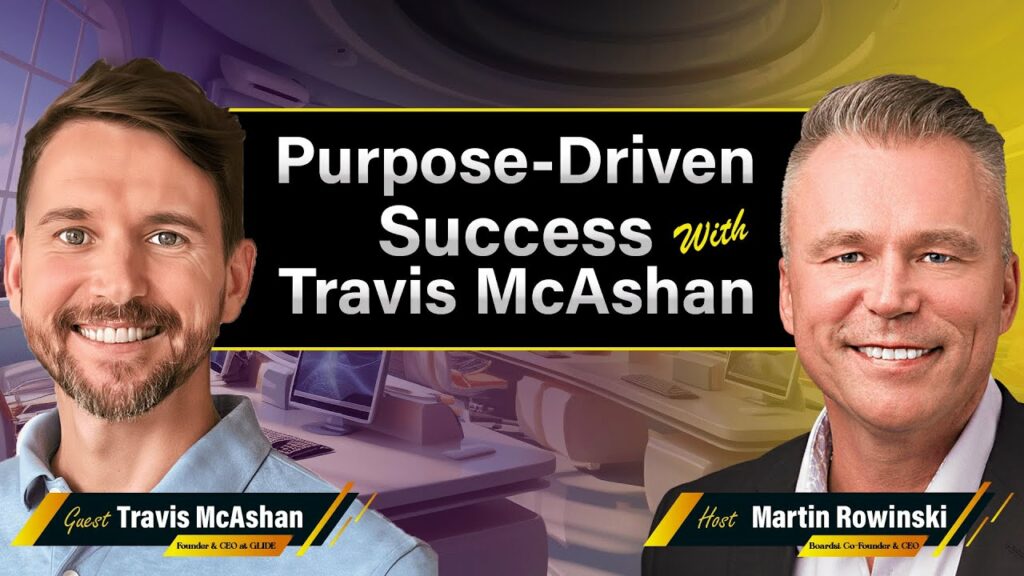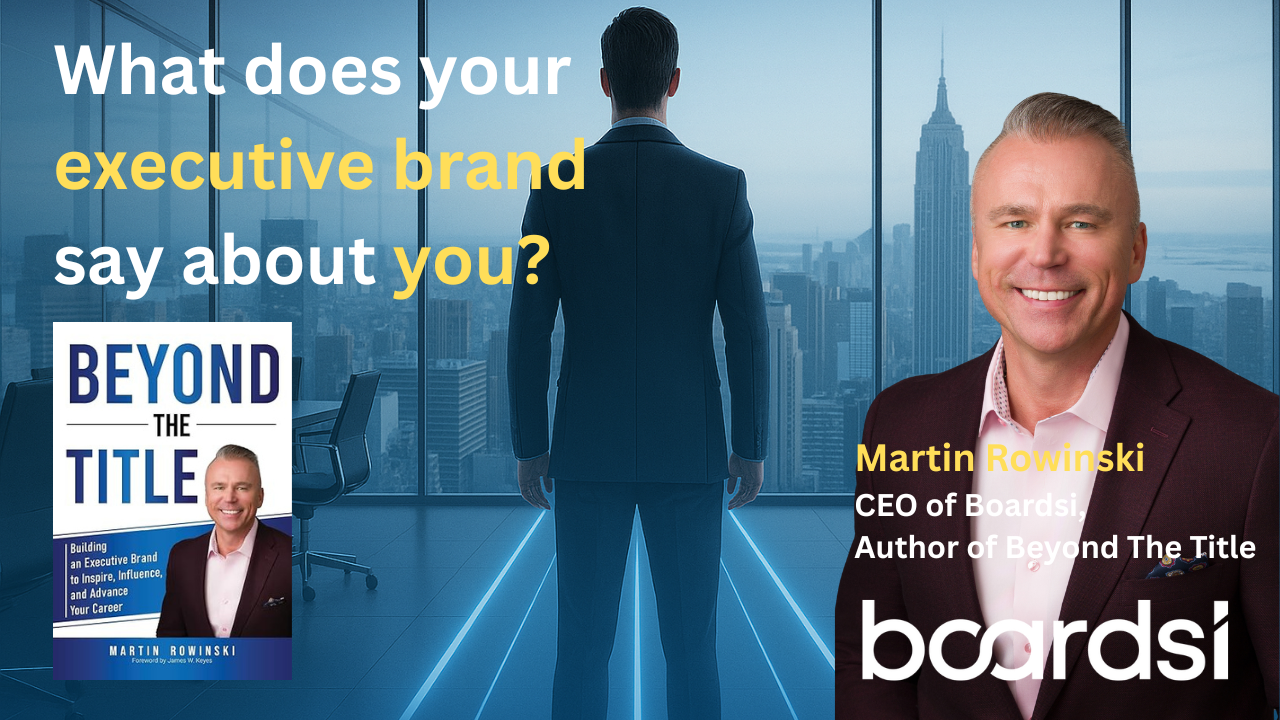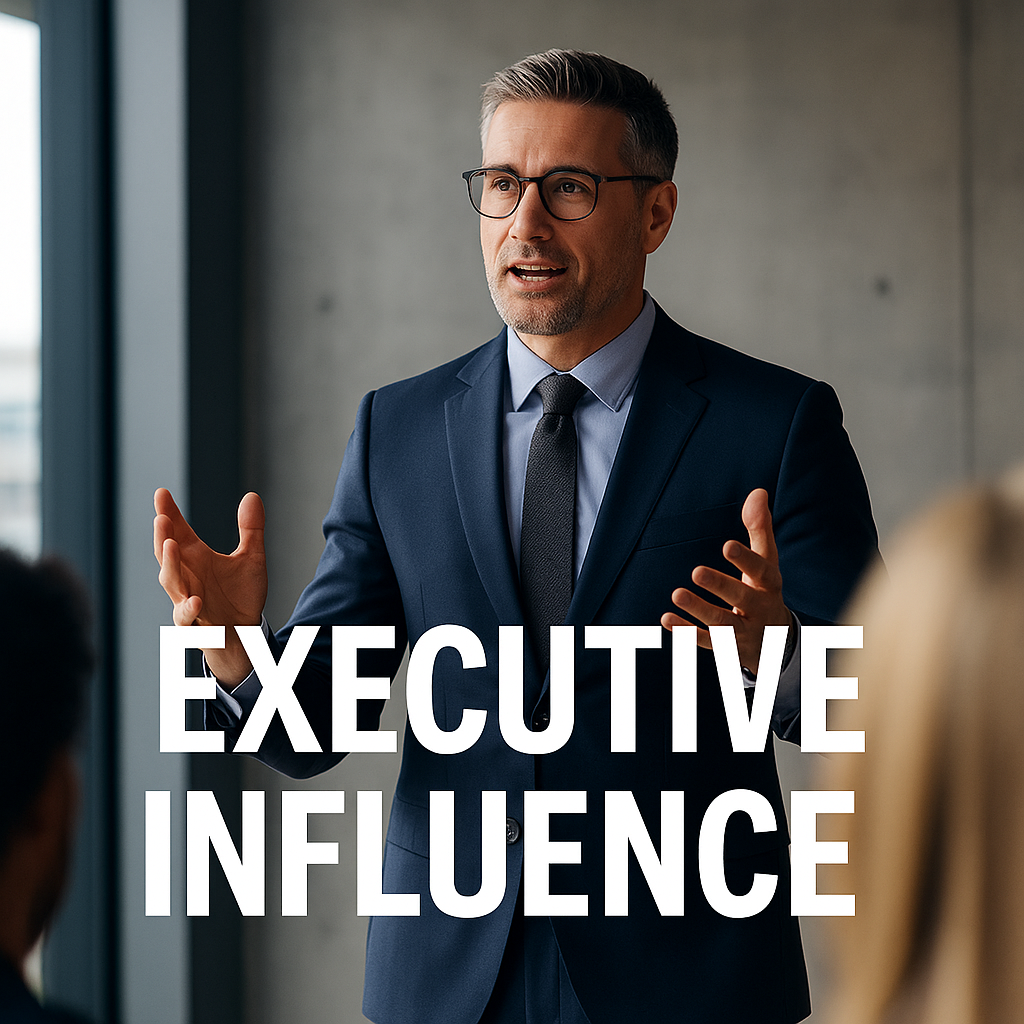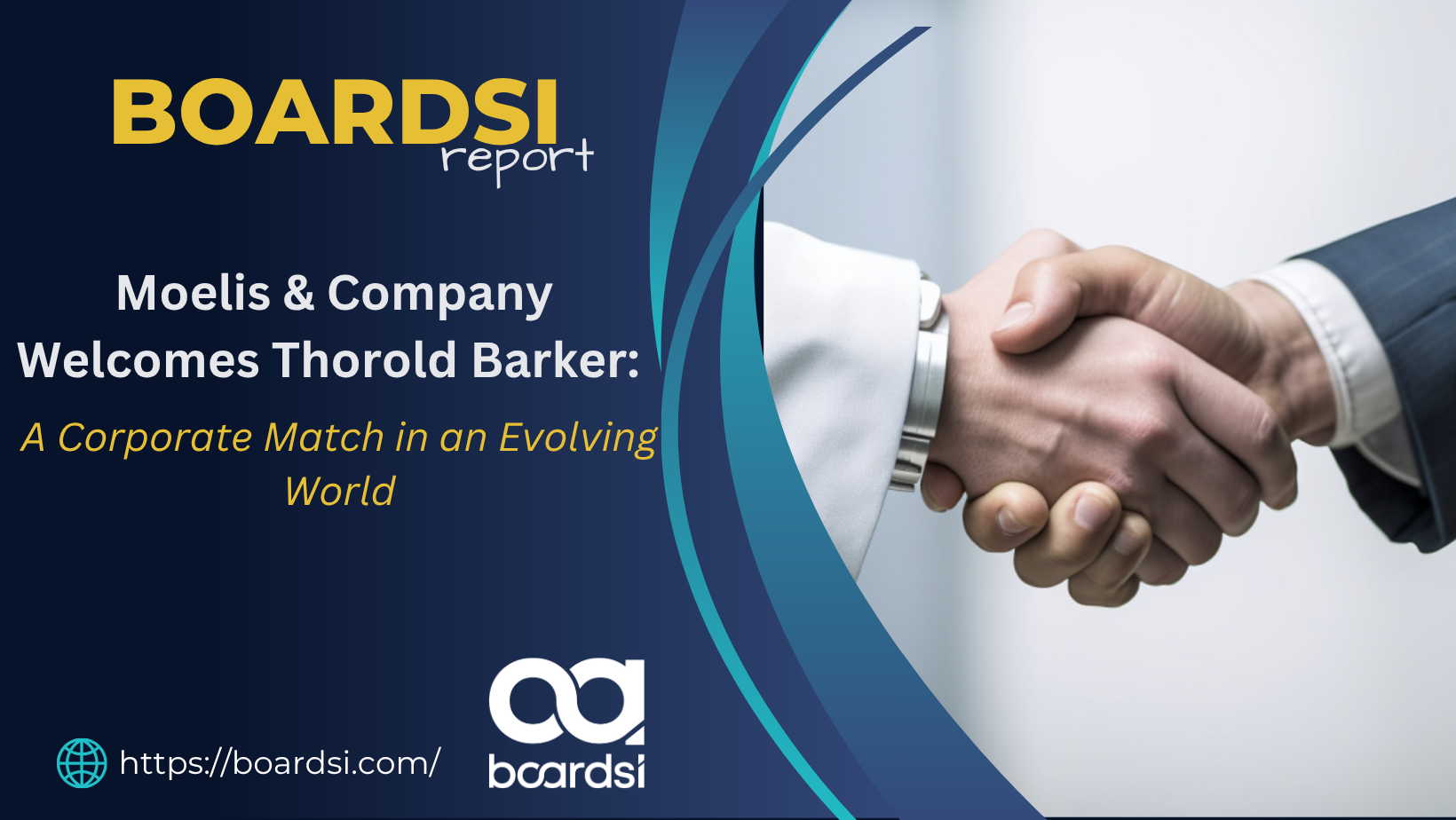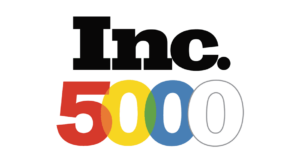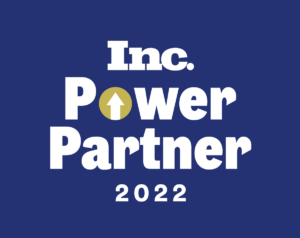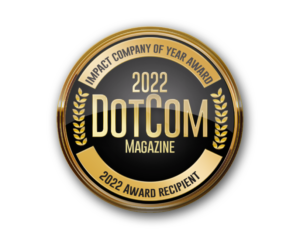In this episode of the Boardsi Leadership Talks Podcast, host Martin Rowinski, CEO of Boardsi, sits down with Travis McAshan, the founder and CEO of Glide, an award-winning digital creative agency based in Austin, Texas. With nearly 20 years of experience, Travis has built a mission-driven company that not only delivers remarkable results but also makes a positive impact on the world.
Travis shares his journey from getting his first computer at the age of seven to founding Glide, a company dedicated to creating beautiful, functional, and high-performing online experiences for startups, nonprofits, and beloved brands. He discusses his approach to leadership, emphasizing the importance of gratitude and recognition in building a healthy work culture. “Gratitude is one of the highest expressions of humanity,” Travis notes, highlighting how this principle has been a cornerstone of Glide’s success.
The conversation also delves into the challenges and rewards of running a purpose-driven business, the significance of organizational health, and the strategies Travis employs to maintain a work-life balance. Whether you’re an aspiring entrepreneur or a seasoned leader, this episode offers valuable insights into building a company that stands the test of time while making a meaningful difference.
Takeaways
- Building a purpose-driven business involves aligning your personal why with the mission of your company.
- Organizational health, including trust, values, and a sense of purpose, is crucial for creating a positive work culture.
- Gratitude and recognition are powerful tools for fostering a healthy work environment and building a strong team.
- Leaders should make a habit of recognizing and encouraging their team members on a daily basis, both publicly and privately.
Sound Bites
- “Don’t go find a job, figure out what you want your life to be and create a job or career that supports that.”
- “You attract more of what you create. If you create outstanding work, you’re going to get more clients that want more of that outstanding.”
- “Gratitude is one of the highest expressions of humanity.”
Martin Rowinski (00:01.123)
Welcome to another episode of Leadership Talks, where we explore the journeys and insights of today’s most inspiring leaders. I’m your host, Martin Rowinski CEO of Boardsi and today we have a truly exceptional guest joining us. Travis McAshan is the founder and CEO of Glide, an award -winning, purpose -driven digital creative agency based in Austin, Texas.
With nearly 20 years of experience, Travis and his team are dedicated to creating beautiful, functional, and high performing online experiences for startups, nonprofits, and beloved brands that share a passion for making a positive impact in the world. In today’s episode, we’ll dive into Travis’s journey, exploring how he has built a mission -driven company.
that not only delivers remarkable results, but also makes a positive impact on the world. We’ll discuss his approach to leadership, digital marketing, and the importance of creating a purpose -driven business. So without further ado, let’s welcome Travis to the show. Welcome.
Travis M. (01:13.272)
Martin, thank you for having me. And that’s a great introduction. I’m humbled to be here and appreciate your interest in having
Martin Rowinski (01:20.605)
Now I’m excited. Obviously I checked out your website. You’ve guys had an opportunity of working with some big companies, some great nonprofits. It’s pretty exciting. So I’ll let you take it. so let’s just jump right in. Tell us about your journey and what led you basically to founding Glide. where did that passion come
Travis M. (01:49.038)
Wow, great question. And they’re just, I don’t even know where to start. I would say, ultimately, I mean, like I’ll make it really short, but I mean, I got my first computer at the age of seven, an Amiga 500. was this first, the world’s first multitasking computer. And anyway, so just this love for digital has just permeated my entire life. I think if
If I could have gotten carpal tunnel syndrome, I would have gotten it by now because I’ve been on a computer for like 12 hours a day since I was seven basically. And just, yeah, just I got my degree in architecture. I think that my passion has always been birthed out of a desire for pragmatic usefulness. Like I just want to be, I love things that look nice, that are designed well, but they also have to be built well. One of my favorite quotes
Don’t make something unless it is both necessary and useful. But if it is both necessary and useful, don’t hesitate to make it beautiful. And so just this concept of form following function, they both go hand in hand. But form is ultimately the purpose, right? You’re trying to accomplish something. And so at the core of my, I would say my expertise or my deepest passion is usability.
and I just love the digital space. And so I transitioned out of college as an architect designing buildings like physical spaces. But I took all of that learning and applied it to the digital space after I graduated college and got my first degree, got my first job at an internet startup as a graphic designer. And so that’s kind of where it all started. Graphic designer, went from a graphic designer to a UX designer. It’s kind of different. You have you’re kind of designing things that look nice. And then a UX designer is really focused on the usability.
And so, information systems and user centered design. And then from there I started Glide, which is my own company. And I’ve been doing that most of my adult life. I started this company over 21 years ago. So I’m entering my third decade. It’s crazy.
Martin Rowinski (03:54.633)
That’s awesome. Congratulations. And I got you beat on a couple of things. One that I’m not gonna sit here and be proud of, but my age, I’m older, which equals I started on Commodore 64. And I upgraded to Amiga when it finally came out. I, yeah, for sure. That was
Travis M. (04:10.571)
Nice!
Travis M. (04:17.586)
fist bump. We gotta get a fist bump in there. That’s pretty awesome, yes.
Martin Rowinski (04:22.793)
God, I love that, Miga. That was pretty fun. yeah, no, I know exactly where you’re coming from. Let’s talk about your awards. 21 years, you’ve gotten numerous awards. I mean, I can go to your website and read them all off, but I’ll let you slightly talk about them. these awards include two that I think are probably really stand out. One is Inc. Best Workplace.
Travis M. (04:26.328)
Man, it changed my life.
Martin Rowinski (04:52.841)
and Inc 5000, which we’ve hit that last year as well. So welcome to the club. We’re amongst, amongst some of the winners out there. And, uh, you know, awards are great and you gotta agree with me. It’s an award is awarding your hard work. So obviously you’ve done something, but talk about, um, talk about that and talk about workplaces, your best workplaces. And I know you’ve set up something amazing.
And I would love to hear from you that you know what you’re known for that for workday, right week.
Travis M. (05:28.044)
Yeah, yeah, the piloting, I think it really kind of goes back to, I am very goal -driven and applying for some of these types of award certifications, things like that are almost like the icing on the cake of all of the effort that you do to get there. mean, a Best Place to Work award absolutely is great to put on your website, but the monumental amount of work it takes to create a healthy work culture is just not seen in that award.
it’s appreciated by the people that work at the company. so, I would say one of my passions is to create a company that’s profitable, healthy, and loved. I think there was a pivotal moment in my life. A lot of my mentors have been authors, and I read a book by Pat Lincione called The Advantage. the entire premise of the book was that organizational health trumps organizational intelligence. And the idea of organizational health is,
things like trust and it’s the soft stuff that’s not like on a PNL or in a spreadsheet. It’s that the organization culture, that there is a set of values and there’s a mission and a purpose and you’re living by these things and people want to be there. And so this was something that I had been doing my entire life just by default, just pursuing a passion to create a place that I wanted to be at. In fact, even before all of this,
I saw a Ted talk back in 2015 by Simon Sinek called Start With Why that really kind of changed my life. you know, he said, hey, look, people don’t care what you do or how you do it. They care most about why you do it. that is the essence. And so I really kind of just ask myself this question. I I’m kind of going back to the essence here, but this answers your question. I think it is most important, which is why do you do what you do? And I literally came out of this
you know, what 10 minute Ted talk. Um, I read the book, is like 250, but you don’t need to read the book. Just watch the Ted talk. But, um, but you know, I, so I spent a year and a half asking myself, like, why do I do this? Why do I wake up every day and come and sit in front of my computer and make websites and serve clients? And I thought up until this time, so it was about 10 years into my company history at that point, you know, we were doing pretty
Travis M. (07:52.898)
You know, up until then, I had three kind of primary aims. was to create, you know, raving fans, amazing websites, and bottom line tangible results, or ROI. We’re a marketing company, so ROI. And I thought, that’s it. That’s the pinnacle. That’s as high as it gets. If we do those three things, we will have accomplished the dream. But I found myself in the rat race of just feeling like it’s just every project is the same as the one before. You know, what am I doing with my life? I even contemplated quitting my company and going and being like a high school football coach. I mean,
Martin Rowinski (08:22.205)
Ha ha.
Travis M. (08:23.22)
I was questioning everything. so kind of in this year long process, I said, well, gosh, if I had a hundred million dollars in my bank, if I was going to die in a year, like, like what would I be doing with my life? And so, you know, not to get too deep, but I realized like the purpose of my life is to help people. I should just make my company an extension of that. And that is kind of very similar to someone like Michael Gerber in the E -Myth where he’s like, don’t go find a job, figure out what you want your life to be and create
create a job or career that supports that. And so that’s what I did. You know, I looked at Glide and said, how can I make this company a manifestation of my desire? And so I ultimately arrived at the conclusion of what my personal why is, which is I want to work with great people. I want to work for great people. I want to do meaningful work and I want to make a difference and I want it to all be on my terms. And that’s my why. And so whenever people ask me, what are you trying to do with your company? Do you plan to sell your company? I was like,
I just want my why to be more true today than it was yesterday. And if that’s not happening where I’m at right now, then I’m going to change it. And if that means that I’m going to sell the company or if I’m going to move and do something different. My point is I’m not trying to sell anything. I’m just saying, I just want that statement to be more true every day than the day before. And I think the neat thing about that statement is it has created a culture.
where I’ve attracted a lot of other people to believe those same types of things, right? You know, so meaningful work, making a difference, working with great people. And all of these things start to create a culture because really culture is just an artifact of what you value. And so, and you don’t create values, you uncover them. And so I looked around at the people that were surrounding me, you these A players, and we just said, what do we see? What do we describe? And we uncovered our core values, which
you know, building meaningful relationships, love what you do, deliver faithfully, get better every day. And all of these core values were just embodied in my personal why and, and shared with the rest of the team. And so I think that when you start with your personal why and you pursue that, even when it hurts, you will ultimately arrive at a place over time, especially if you’re good at what you do, you know, and you don’t give up where you
Travis M. (10:40.078)
be on the best place to work and where you can win an Inc 5000 fastest growing companies. you know, so maybe that’s a pretty big disconnect, you know, to like of all the minutiae that get you there, but that would be like the deep answer.
Martin Rowinski (10:54.153)
That’s awesome. And obviously your employees must enjoy working for you with you. How do you approach on a day -to -day basis like your leadership? Is there anything specific you do on a day -to -day or anything specific you do on a weekly basis? Do you meet with everybody? What is your day -to -day approach?
Travis M. (11:19.15)
That is such a good question. So it’s like we’re taking it from like the 20 year spectrum all the way to like the 24 hour. Yeah, and I can definitely answer that question in a very specific way. would say my leadership style, I have ADD. I’m just going to admit it. And what it means is it’s not an excuse. It’s like I kind
Martin Rowinski (11:24.873)
And I’m sure you changed over 21 years.
Travis M. (11:44.782)
My mind is a race car on a road that’s built for like sedans going 60 miles an hour. And so I’m all over the place. And so that makes it tough to be, I think, a thoughtful, compassionate leader because I am like a hundred miles an hour going toward goals. And so, you know, I heard someone say one time, you can’t be efficient at relationships. Well, like, believe me, I’ve tried, it doesn’t work. know, the last time I tried to be efficient at the relationship with my wife, you know, let’s just say it doesn’t work out. You have to be, you know,
deeply compassionate and time spent. So the answer to that question, in my opinion, is I had to find what worked for me. And what worked for me is I believe that I’ve been put on this earth to encourage people, you know, and that is deeply authentic to my life path. And how I express that or manifest that at my company as a leader is to express gratitude and recognition. And
I have found that to create a really award -winning culture, objectively award -winning culture at Glide that’s profitable, healthy, and loved, one of the secret strategies is gratitude. I think you will find that a person’s salary is generally number four on their list of why they stay at a company. mean, it’s like their manager, their coworkers, work -life balance. mean, Dell just put out something that said, hey, look, if you…
If you don’t come back to work, you get cut off from the path of promotion. Like you can no longer be promoted from your current position. Half the company elected not to come back to work. So they valued their work -life balance more than they valued promotion and upward trajectory in their career because they got so used to having the flexibility and life balance to work from home. And it just goes to show you. like, you know, I’m
Martin Rowinski (13:20.285)
Wow.
Travis M. (13:36.908)
my mind is racing, like, you know, I have this concept that glide called ABC, which is autonomy, belonging and competence. I mean, these are like three fundamental desires of human beings, right? People desire to not be controlled. You know, people desire to fill a sense of belonging and people desire to be the best version of themselves. And so those are the three structural pillars of our culture at glide, right? So, you know, autonomy is, not even a core value because it is the literal air we breathe, you know? And so we have,
embodied that through flexible work hours, through unlimited time off, through the four day work week, through not controlling how people do what they do, and then belonging, like loving on people. So going back to the concept of gratitude, I literally sat down about seven years ago and I made a list of every single person that worked at my company, employees, contractors, vendor partners, and I made a goal to give a private…
specific word of gratitude to one person every single day. And I did this for many years and didn’t tell anyone I was doing it, right? So it’s like you’re just throwing these rocks in a pond, right? And it was just so funny to watch. So then a few years later, I was at a conference. I joined EO Entrepreneurial Organization and a friend of mine who was in EO as well, he said, hey, we have this Slack channel we call Shoutouts. And we give people shoutouts with each other. I was like, that’s a brilliant idea. I went
that same day and I created a new channel, go, guys, I have a new channel, it’s called Shoutouts. And the day we started that channel, because I had been putting those seeds for years, daily, complimenting people and encouraging them and giving them, not just, hey, you did a good job, but this specific thing in this specific way, you did a good job. And we started that channel and it just blew up. And so, year after year, we’re seeing about two, I mean,
Our team is small, we have less than 20 FTE or 25 FTE. Back then it was even smaller. We were seeing about 2000 shout outs a year. Between about 10 or 15 people, you’re talking about 20 to 30 a week. And so it’s just this gratitude and recognition. It’s just, you cannot have a toxic work culture and have all of this gratitude and recognition and encouragement just being thrown all over the place. Those two are
Travis M. (15:57.226)
And so I think that it is just like a, it’s like an antidote in my opinion to the toxicity and the clicks and the politics and all that stuff. And I always tell the team like, look, this is a little kumbaya and sometimes you don’t feel like it. And sometimes I’ve had to come to the story arc of being what they call toxic positivity. Like you can be too positive. And so there’s been times where
you know, had to kind of check myself and be like, look, if you’re not feeling like giving someone a compliment, don’t make it, don’t force yourself to do it, just don’t do it. But I think that when you get to a place of like honesty and authenticity and you know, you just kind of realize like, this is just a better way to live. Like I always tell the team, was like, dude, the world is hard. And you know, we have a lot of clients that are upset in any given moment. And you know, because of XYZ, and so it’s like
by leaning into this gratitude and recognition, you are just combating the negativity that we’re just feeling with wars and plagues and pandemics and all of the other stuff that is just like compressing down upon us. And so it creates a culture where you almost feel like refreshed to come to work, you know, versus the
Martin Rowinski (17:11.271)
Yeah, it’s the escape. Yeah, no, I agree. know, obviously leadership, got to treat it differently when it comes to salesperson or a customer service, or in your case, you have a lot of creativity, right? And I think, you you struck the nail on the head by giving your creative team the flexibility because being
Constructed to sit in front of a desk definitely does not in my opinion Make a person a creative person and make him love what they do but man I so agree that when these creative people that are designing these beautiful websites Can stay creative and love what they do. They’re gonna put that love right into their work. So yeah, and And I know you’ve had some
Travis M. (18:03.734)
yeah, yeah. That’s really good.
Martin Rowinski (18:07.697)
Like I said before, big clients, if I speak out of line, Yeti was one of them,
Travis M. (18:15.246)
Yeah, we actually worked with Roy and Ryan Cedars, the founders of Yeti Coolers, when they were at the beginning. In fact, we worked with them for almost their first 10 years and created their first three marketing and e -commerce websites. It was a wonderful journey to be on and to see them now and to see all the good decisions they’ve made and to have just basically transitioned into a beloved brand. It’s
Martin Rowinski (18:41.203)
How, just out of curiosity, you obviously have a lot of creative on your team and stuff. How do you guys, where’s the leadership and inspiration to go after the clients? Is it a funnel? Is it brand awareness? Are you out there marketing? how, just curious.
Travis M. (18:59.458)
That’s such a great question. So, many years ago, HubSpot came out with this concept of the funnel. mean, maybe they didn’t necessarily invent it, but they kind of codified it as a mid -market organization thought leader. And not too many years ago, they came out and said, the funnel is dead long than the flywheel. And the flywheel of growth was actually something that was created by Jeff Bezos on a napkin. And he kind of just described the process of Amazon’s growth in one
very simple sketch. But the flywheel of growth is you do great work, you create raving fan clients, you increase your position and visibility in the marketplace, you level up your people, your team, your processes, and then the virtuous process repeats, right? And so like that is the short answer to how you collect clients. So mean, there was a day, 22, 21 years ago where
I was just trying to pay my rent, you know, and take, I mean, I literally started Glide with negative $200 in my bank account and I had to borrow money from my mom to like get internet connection, you know. I lost my job at, I was driving across the country from an internet startup that failed and on the way back
Oregon to Texas, my car broke down. I had like a $700 bill to fix my car. So I end up in Texas with negative $200. And I’m like, what am I going to do? I got to pay for rent. I staying with a friend, in fact, in her condo. The point I’m trying to make is that’s where I started. So it’s like, take whatever you can get. to me, if you do really great work, that’s adding value. So when you create value,
The virtuous cycle starts, you know, and I think that maybe all these years later, it’s like, how do we, you know, connect with and go out market and work with, you know, larger mid -market and enterprise clients. I think that, I mean, there is a component to being able to, you know, put yourself out there, right? So we have an agenda that we’re trying to accomplish with who we’re trying to work with. I would say for us, we’re still in the process of like clarifying.
Travis M. (21:14.815)
We have been on this journey where we were a product -led company. We make world -class websites to story -led. We really try to use our business as a force of good. We’ve become a certified B Corp, which is a business that has been codified for the purpose of using its business as a force of good. Well, the problem is you take two service companies like us, like we say, we’re Glide and maybe a similar competitor, and then…
potential client, a great potential client comes along and they’re looking at these two companies and one company says, you know, we deliver marketing services at ROI and this other company says we want to make the world a better place. Well, who do you think the client is going to choose? Right? Like they’re going to choose the ROI company because marketing is about ROI, you know, and yes, maybe some people care about purpose. And so one of the things we’re learning is even though we have an affinity for working with organizations that are purpose led, all organizations look at marketing as a cost.
that needs to produce results. And so even for us, we are on this journey of how we position ourselves in the marketplace because I know we do great work, and I know we produce results, but how do we position ourselves and talk about ourselves? And so the answer to your question is I think that we’re still working on that and trying to figure it out. And I think that the easiest answer I could give is just that when you do amazing work, you will be referred, you will get recognized, you will be found.
you by new people, you attract more of what you create, right? So if you create outstanding work, you’re going to get more clients that want more of that outstanding.
Martin Rowinski (22:51.119)
Awesome. No, that makes sense. it’s a it’s a you’re in a space that’s overwhelmed with a lot. And unfortunately, a lot of garbage. So you got to. Yeah, I mean, you go on Fiverr, you got thousands of so -called website designers. But the end of the day, I guess you got to really ask yourself, what am I getting? And you got to you got to get
Travis M. (23:02.102)
Yeah, the replaceability is high.
Martin Rowinski (23:19.869)
get the quality and you got to get the love and you got to get, know, yeah, ROI is important, of course, so survival of any business. But you also got to got to have something that shows the quality of work that you do. So yeah, you guys are definitely in a tough space.
Travis M. (23:34.704)
Mm -hmm, yeah.
Yeah, and when you think about it, value creation, mean, value creation, there’s all kinds of scientific theories of value creation. And one of the best is the trifecta of revenue gain, cost reduction, and this subjective component of emotional value. So if I’m the CEO, it’s like, I got to get this project right, or my job’s on the line. And so there’s components to ROI, which is revenue creation or cost reduction. Both of those kind of create ROI.
but the emotional value is equally important. mean, you might have a marketing leader who is beholden to the CEO to create results for the sales team and there’s ROI in that, but the project just has to be successful, like in their eyes, like for them personally. And so I think that a lot of that too is just you want to work with an organization that you can trust to get the job done, you know? And I think that’s where things start to fall apart as you can move kind
to Fiverr and whatever other options. Someday there’s gonna be an AI website where you punch a button and the whole website gets created on the fly. The whole thing, the images, the text, the design and all of that. And it’s like, okay, well, who are we and how can we compete against that? Well, it will be through our thinking, not through our doing.
Martin Rowinski (24:52.809)
Yeah, absolutely. So Travis, now that you are not 200 bucks negative, you’re an Inc 5000 company, you’re no longer crashing on anybody’s couch. You’re married, you’re hardworking, you got your ADD going. What does Travis do to create your work, fun, life?
balance. What do you like to do to relax, to come down, to maybe slow down your thinking, your creativity? What is your escape? Don’t tell me work.
Travis M. (25:28.6)
So,
So interestingly, honestly struggle to have downtime. In fact, I don’t know if you’ve heard, there’s this health challenge called 75 Hard, and it is a very difficult health challenge. It’s actually not even a health challenge, it’s a mental toughness challenge. And you essentially have to work out 45 minutes twice a day, you have to drink a gallon of water, have to read a certain number of pages, you have to have a diet and all these things.
The catharsis of that, it is kind of like antithetical to like relaxation because it’s like really hard work. But it challenges a different place in my brain. And you know, I’ve been on this journey doing this challenge and it’s 75 days and you’re only supposed to do it once. you know, best friend and I started it back in January. We finished and then we started again and we finished and now we’re on our third time through. We plan to do it four times this year, which is insane.
I’m a big fan of David Goggins just like being uncommon among the uncommon, you know? And so we’re just challenging ourselves. so, but it’s just awesome because I get it. I’m just sitting here texting with my best friend or friends. We have a number of people in this group that were created. It’s called Life Hard. We actually created our own version. It’s like 75 hard, but for the rest of your life. And so it’s like, we’re calling it Life Hard. But the point I’m trying to make is I would say that it gives me a lot of joy to be able to
texts back and forth all day long, because I’m drinking a gallon of water every day trying to, that’s really hard to do. But I would say other than that, spending time with my family, I have four children, 13, 11, eight, and four. And so any chance I can get on a daily basis to hang out and have fun, play hide and seek, whatever it is, swim, all that stuff, I would say that’s the joy of my life.
Martin Rowinski (27:24.878)
Awesome. Yeah, kids can do
Travis M. (27:27.99)
Yeah, yeah. Well, I’ll tell you more about the live heart. Maybe we can invite you
Martin Rowinski (27:32.201)
Sounds good. So as we wrap this up, can you share with our audience any other tips if you have any? not, how do they connect with you? How do they connect with Glide? And by the way, if anybody out there is looking for a website, looking for inspiration, looking for love, definitely hit Glide up. But yeah, I’ll give you the mic. How can they get hold of you guys?
Travis M. (27:57.25)
All right. I would say one tip I would give, you know, other leaders and I mean, look, I have not figured it all out. But the one thing that has changed my life is just realizing how incredibly important gratitude is. think gratitude is one of the highest expressions of humanity, like just in general. Like, I mean, if you can just walk through life with joy in spite of the challenges and trials and, you know, again, not toxic positivity, but
like founded joy, right? Happiness is circumstantial, joy is more long -term. But gratitude is just something that begets more gratitude. It’s kind of like creativity, begets creativity. And so my recommendation to leaders is if you don’t already have a daily habit to recognize and encourage and speak life into your people,
on a daily basis, especially don’t tell everybody you’re doing it, just freaking do it. like, don’t say, hey guys, I’m gonna start saying every day something’s positive. No, no, no, you don’t tell anyone you’re doing this, you just do it. And whether it’s private, I think that you do a combination of private and public, it’s great to publicly praise people, but I think that there’s something special about private praise because you’re not getting the adulation from other people seeing you praise someone. So it’s like, the only credit you get is for loving on
one person in a one -on -one space. So I the mix of public and private praise can be a powerful catalyst to grow through your company. I think that it could potentially completely change the culture of a company if a leader were to commit to that habitually and routinely. And then just how people would reach me on LinkedIn, my name, Travis Makashan. So Travis Makashan on LinkedIn or our website,
So either of these two ways would be a great way to get a hold of
Martin Rowinski (29:50.009)
Awesome. Thank you. Yeah, if you weren’t going to drop your URL, I was about to. Thank you, Travis, for sharing your insights with us, your experiences, your overall look into your company and what you give back into your culture. I think you’ve built something awesome. And it’s been an absolute pleasure having you on the show. And to our listeners, thank you for tuning
Travis M. (29:54.626)
There you go.
Martin Rowinski (30:17.029)
Stay tuned for more episodes featuring industry leaders who are shaping the future of business and leadership. Thank you, Travis.
Travis M. (30:26.754)
Thank you, Martin. I’m just thrilled to be here. Thank
Martin Rowinski (30:29.627)
Awesome.

